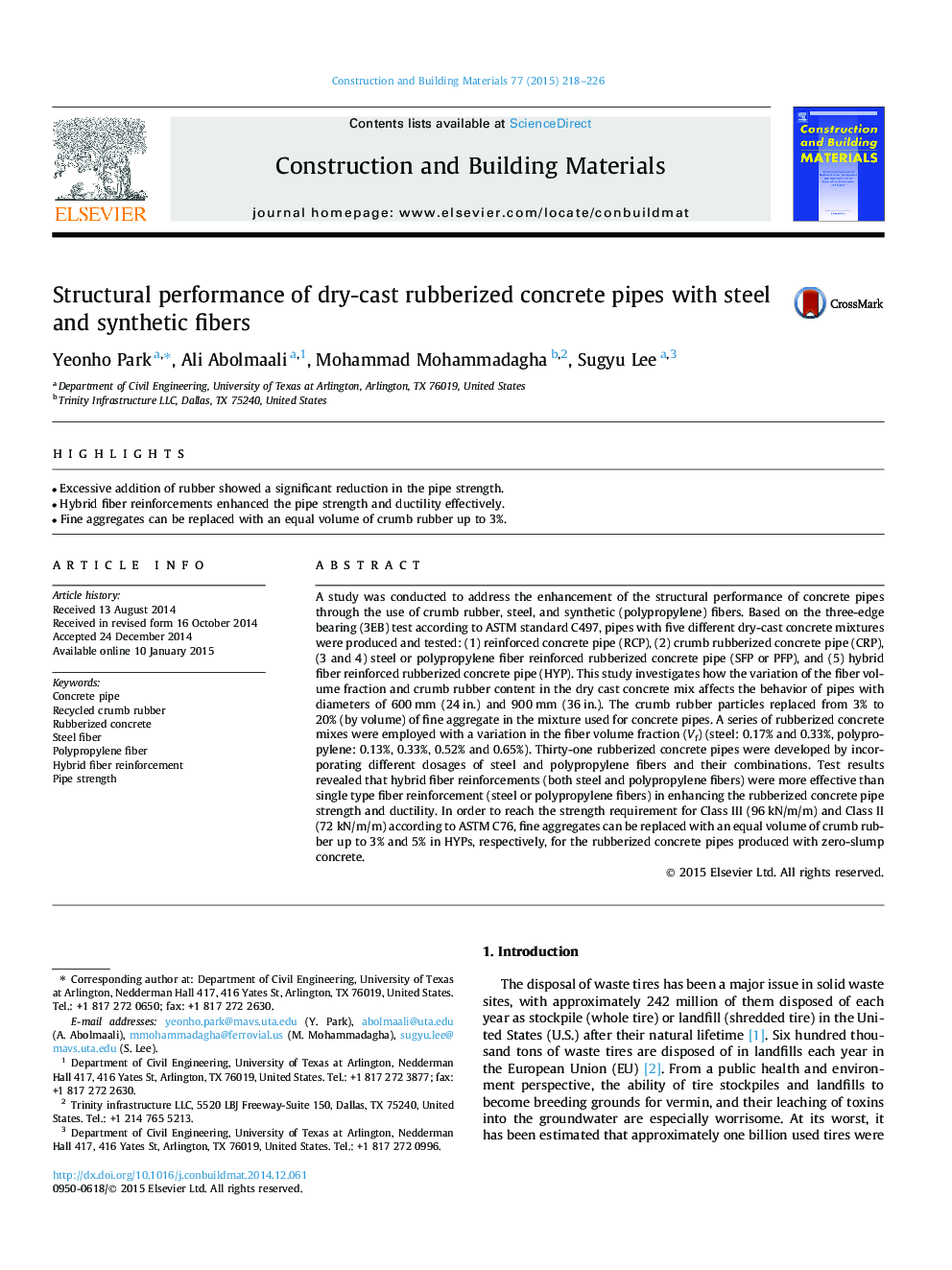| Article ID | Journal | Published Year | Pages | File Type |
|---|---|---|---|---|
| 6721588 | Construction and Building Materials | 2015 | 9 Pages |
Abstract
A study was conducted to address the enhancement of the structural performance of concrete pipes through the use of crumb rubber, steel, and synthetic (polypropylene) fibers. Based on the three-edge bearing (3EB) test according to ASTM standard C497, pipes with five different dry-cast concrete mixtures were produced and tested: (1) reinforced concrete pipe (RCP), (2) crumb rubberized concrete pipe (CRP), (3 and 4) steel or polypropylene fiber reinforced rubberized concrete pipe (SFP or PFP), and (5) hybrid fiber reinforced rubberized concrete pipe (HYP). This study investigates how the variation of the fiber volume fraction and crumb rubber content in the dry cast concrete mix affects the behavior of pipes with diameters of 600Â mm (24Â in.) and 900Â mm (36Â in.). The crumb rubber particles replaced from 3% to 20% (by volume) of fine aggregate in the mixture used for concrete pipes. A series of rubberized concrete mixes were employed with a variation in the fiber volume fraction (Vf) (steel: 0.17% and 0.33%, polypropylene: 0.13%, 0.33%, 0.52% and 0.65%). Thirty-one rubberized concrete pipes were developed by incorporating different dosages of steel and polypropylene fibers and their combinations. Test results revealed that hybrid fiber reinforcements (both steel and polypropylene fibers) were more effective than single type fiber reinforcement (steel or polypropylene fibers) in enhancing the rubberized concrete pipe strength and ductility. In order to reach the strength requirement for Class III (96Â kN/m/m) and Class II (72Â kN/m/m) according to ASTM C76, fine aggregates can be replaced with an equal volume of crumb rubber up to 3% and 5% in HYPs, respectively, for the rubberized concrete pipes produced with zero-slump concrete.
Related Topics
Physical Sciences and Engineering
Engineering
Civil and Structural Engineering
Authors
Yeonho Park, Ali Abolmaali, Mohammad Mohammadagha, Sugyu Lee,
